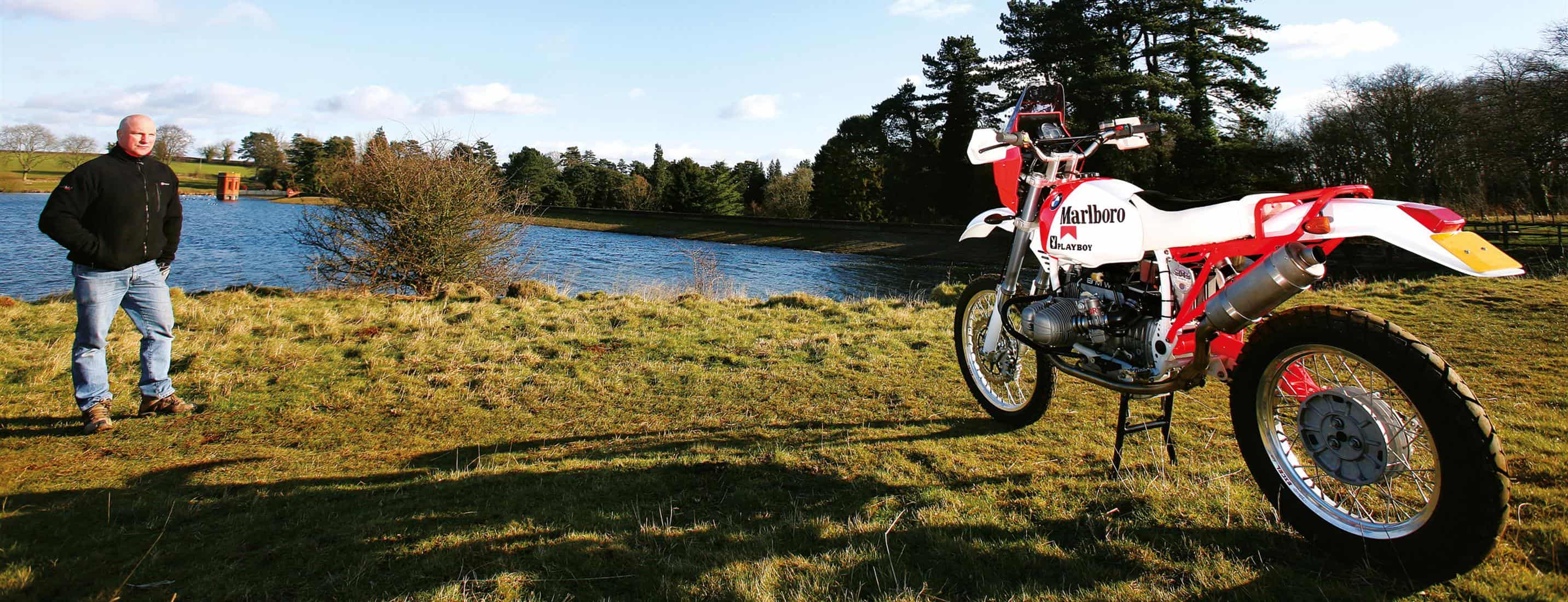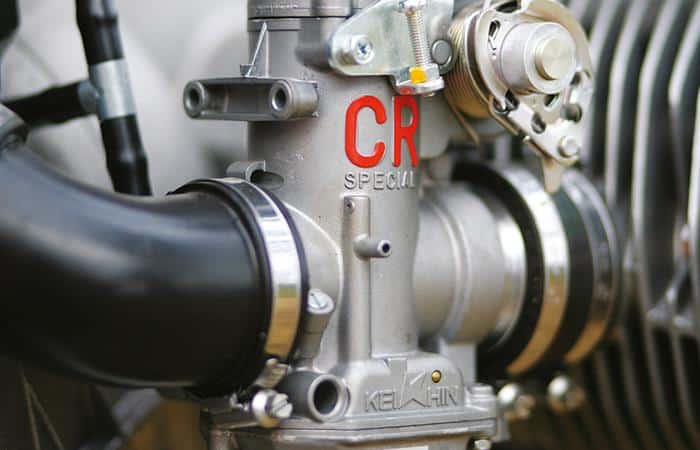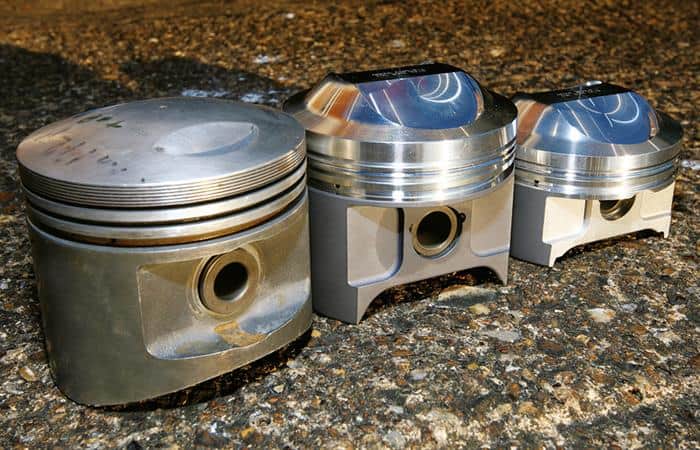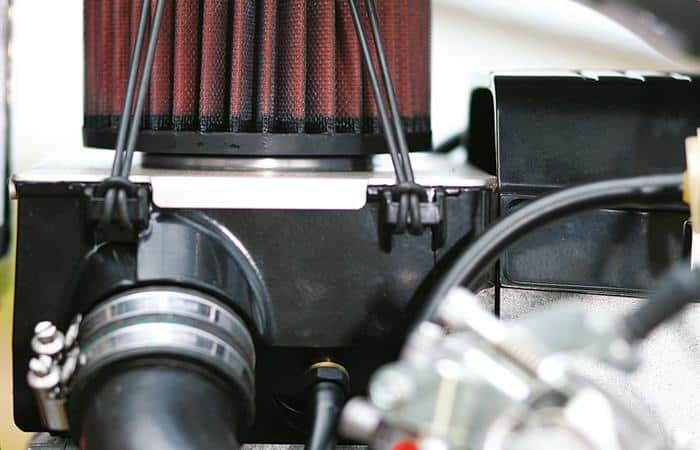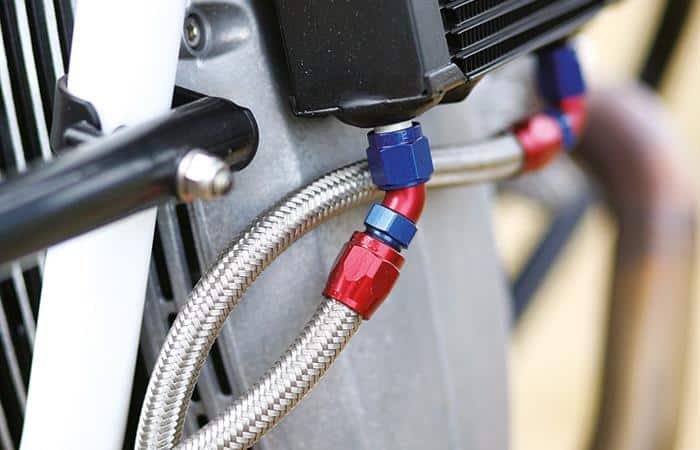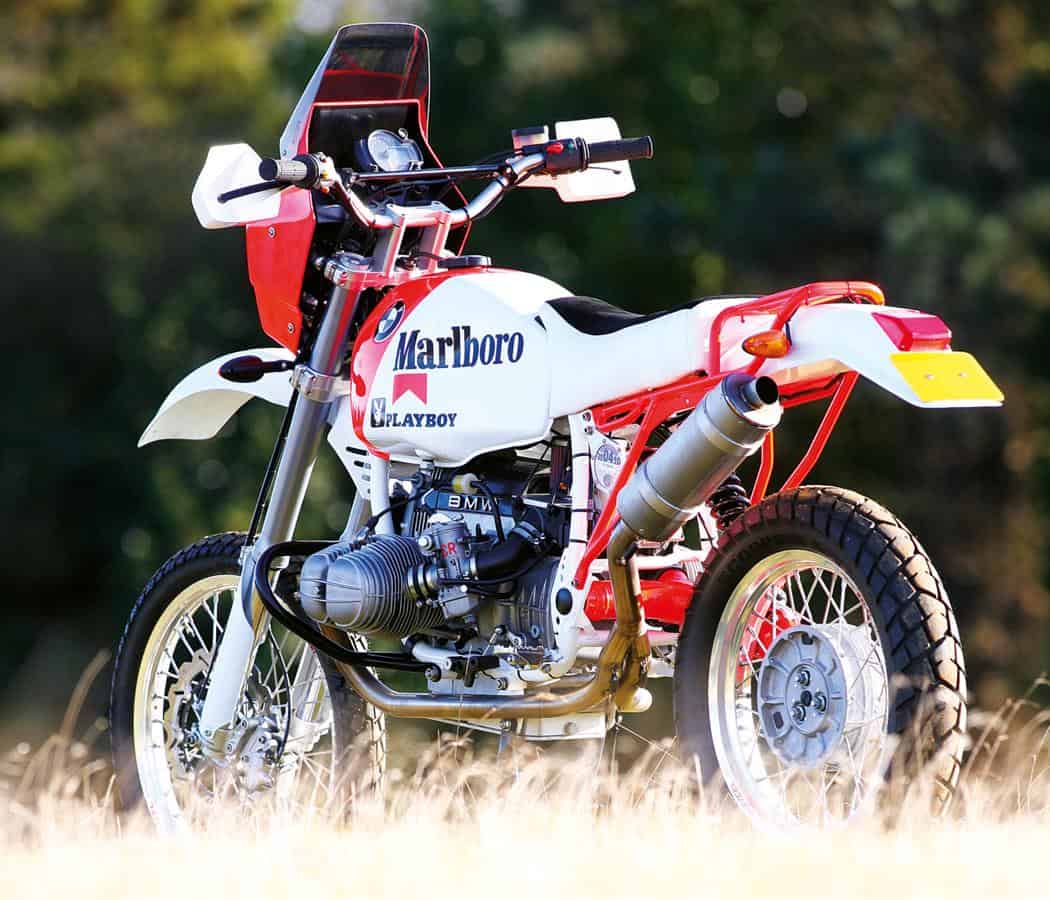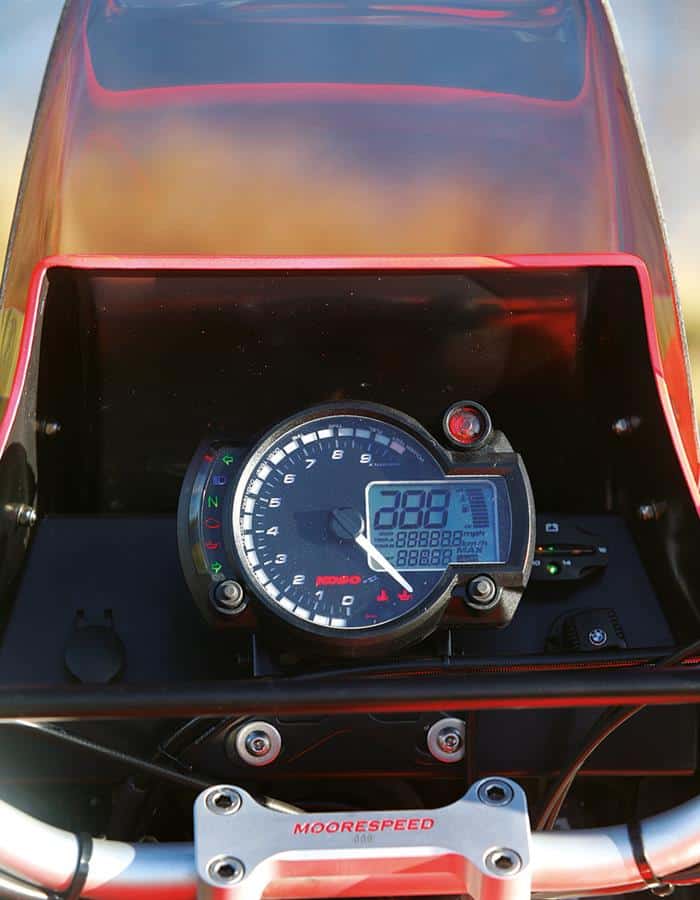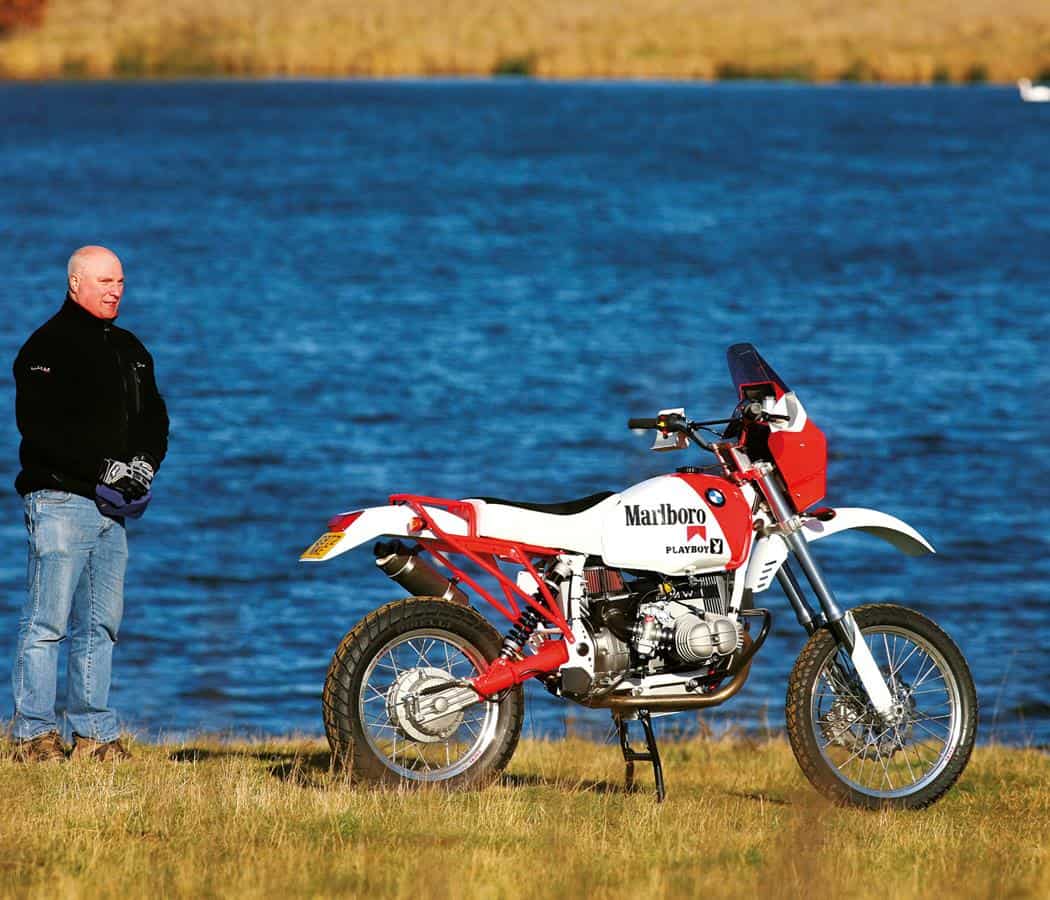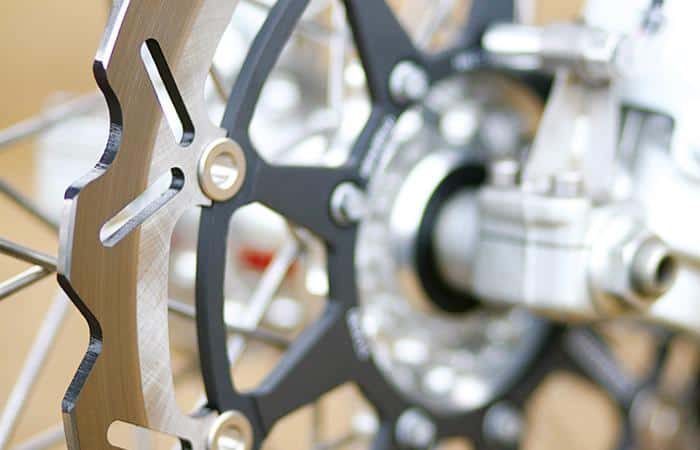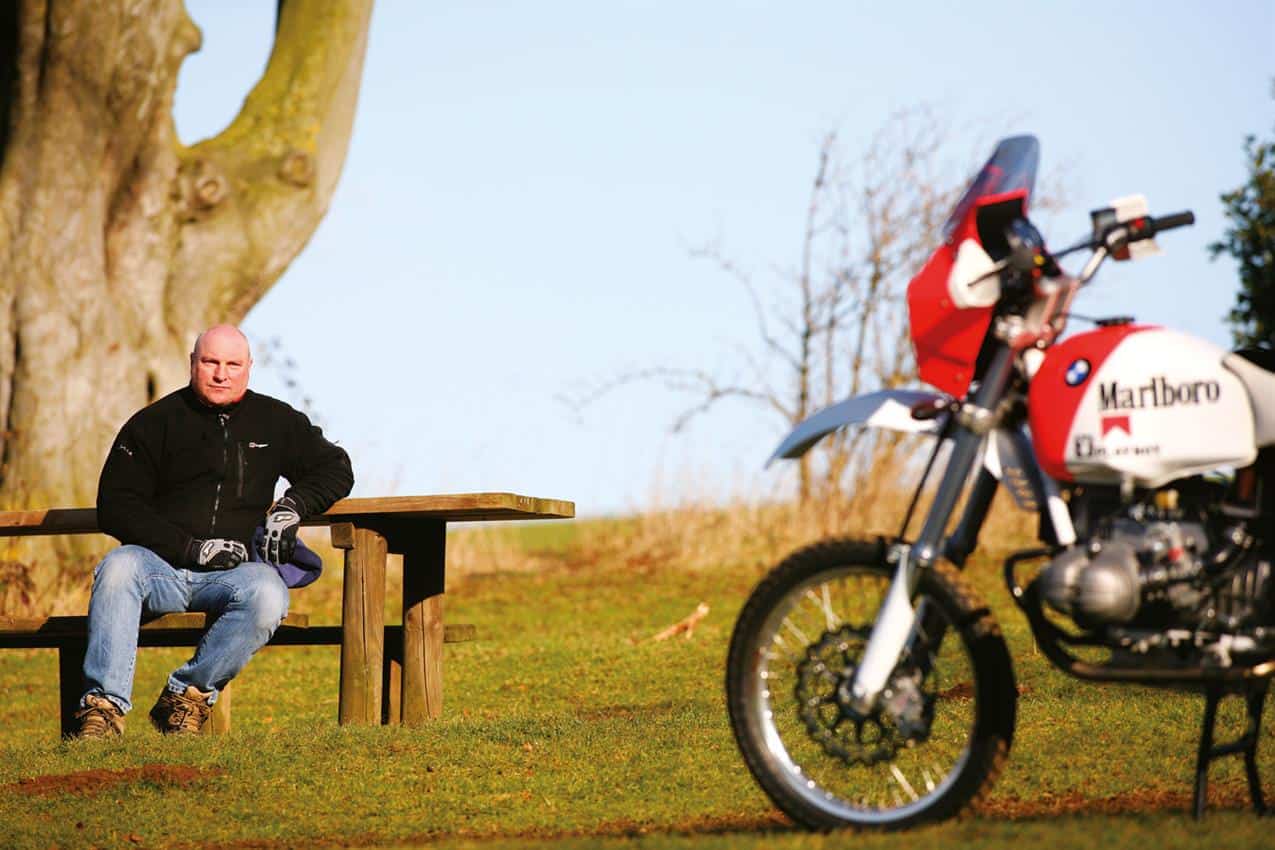One man’s passion for early BMW’s saw his hobby turn into a business, and led him to build this smokin’ classic Dakar replica…
Above the deep drone from the two-into-one exhaust a sharp ‘phut, phut’ could clearly be heard. I looked across at Richard Moore, the man behind the bike’s build-up, who was holding the throttle at a steady fast idle. He sensed my unease at the noise. ‘Ah, it’s just spitting back up the inlet tracts’, he commented nonchalantly, ‘it’ll do that. It’s down to the long-duration cam’. And with that he pulled out of the driveway and charged off up the road. ‘A 20-year-old, pushrod-motored trailie has no right to shift like that,’ I thought to myself as the drone turned into a distant roar…
Richard may have spent a year turning a 1989 BMW R100GS into this rip-snorting Dakar race-rep, but the bike’s not his. These early GS Beemers have something of a cult following, mainly amongst overlanders who value their rugged build, simplicity, and relatively light weight, though there is a demand for more, how shall I put it, ‘performance oriented’ examples. And Richard’s company, Moorespeed, fulfil that demand…
Two Wheels Better
In terms of hands-on work, Richard IS Moorespeed – beavering away in what an estate agent might describe as a ‘compact and bijou’ workshop. Yet his CV is as impressive as the finish on his bikes. ‘I’ve worked with Aston Martin’s works team, AMG-Mercedes touring cars, and I built Mansell’s F1 Ferrari suspension,’ he recounted. ‘Bikes are my passion but cars paid the money…’
Back in the ‘80s Richard raced 490 Maico MXers though he always wanted to ride the Dakar, which goes some way to explaining his love of those early BeeEm rally bikes. In fact, he built himself such a machine to enter in the 1993 Spanish Baja, and following that performed what he described as ‘a lot of R100 development’ which laid the foundations for building them today. So alongside performing the cylinder head work for a local Norton specialist and similar induction/exhaust fettling on 1500cc V8 Coventry Climax engines in classic single-seat racecars’, building BMW ‘rally replicas’ (and modifying early Yamaha Teneres) is now his day job. This Marlboro/Playboy liveried machine is Moorespeed bike number nine, and perhaps the pinnacle of his special-building work…
Moore Power
Despite the BMW’s owner being out of the country, we were given access to the GS for the photo shoot, and as we stood chatting with the owner’s father about all manner of automotive activity I got the feeling that Richard had become something of a friend of the family. ‘He went to the same gym as me,’ Richard stated. ‘He’d seen a previous creation of mine and wanted one built.’
The base bike Richard purchased from down in Brighton, though he asked the owner to take it apart for him. ‘I insist that customers strip the bike,’ Richard explained. Building a bike is undoubtedly the best way to get to know how it works, but if you’re handing that job over to someone else then disassembling the ‘donor’ machine is the next best thing. And as many of Richard’s customers are looking to take their bikes on desert rallies or overland trips then knowing how everything bolts together is crucial.
The build began in August 2008 and took almost a year, mainly because of what Richard describes as ‘massive engine development’. I think it’s safe to say that the air-/oil-cooled, pushrod motor is pretty far from stock. ‘Have you got enough paper?’ Joked Richard as I suggested we went through the list of modifications he’s made to the Beemer.
As standard the engine’s cylinder heads are ‘poorly designed’ and this is an area where Richard has spent an awful lot of time and money on improvements. ‘I’ve done mega development on the piston crown to avoid the need for twin-plugging [using two spark plugs to ignite the mixture], to refine the flame front and improve combustion.’ Previously Richard had created his own design of ‘long-skirt’ piston (made specifically for him by Omega), before trying short-skirt parts which allows the use of a longer con-rod. This isn’t the same as ‘stroking’ an engine as the crank throw and piston stroke remain the same – in the most basic terms a longer ‘rod gives greater leverage and therefore greater torque.
Also adding to the oomph is the use of smaller exhaust valves. Smaller? Surely bigger’s always better? Well not in this case, because the long-duration cam means that larger exhaust valves would allow the air-fuel mix to simply pass straight out. However, the intake valves are 4mm large than stock! ‘The valves are specially made, as are the Colsibro [a high-strength copper nickel silicon alloy – the ed] valve guides. This works well with the valves – it’s very slippery and gives good heat dissipation. I used a BMW Sport cam designed for 750cc sidecar racers but I’m looking at getting my own cams made. I get every bloody thing else done!’ Richard gave a hearty laugh, and I struggled to keep up noting the long list of mods…
The crank was balanced – removing more than half-a-kilo in weight – by someone Richard describes as having been ‘balancing engines for many many years.’ The result is virtually no vibration. The bottom-end features a deep sump for increased oil capacity and this has been machined with baffles to help keep the oil exactly where it’s required. The base of the sump also acts as a sumpguard, being made from 6mm thick dural, and the contents’ temperature is kept in check by a ten-row oil cooler.
Feeding the motor is a pair of Keihin CR Specials which Richard had modified by the factory, via Allens the UK importer. Having previously had the same work done back in the ‘90s he asked if the same people in Japan could help, and once those individuals were found the carbs were delivered modded to his spec. ‘I knew that we could get 80-odd horsepower [at the crank] out of the original Bings,’ commented Richard, ‘but we were looking for more than 80hp! Plus by using the Keihins you don’t get any problems with diaphragms and that helps when you’re out in the desert.’
The exhaust was what Richard describes as something of a ‘debate’. Using one-and-a-half inch diameter headers worked well but with the kind of power Richard was after the pipework simply had to be larger. So now they’re one-and-five-eighths inch…
‘The headers are actually longer than I’d have liked,’ he noted, ‘but the exhaust has to go where it goes. And I think it would also make more power with bigger secondaries. The airbox is based on what experience has told me works and it’s worth about 2-3hp right across the range.’ As standard the airbox is apparently quite restrictive and its size and shape, together with a voluminous K&N filter, is what makes the new part work so well.
The dyno figures are testament to Richard’s lengthy engine development program, as the bike is now producing 76hp at the rear wheel and some 66lb-ft of torque. Considering that a stock R100 engine produces something in the region of mid-to-high 50s, then that’s quite some increase! In fact, that’s not far off what an R1150GS is putting out, only this bike weighs CONSIDERABLY less than the later machine…
‘There are horrendous power losses through these BMWs’ bevel drives and gearboxes,’ Richard stated, before going on to suggest that the difference between crank and rear wheel figures is easily the wrong side of 18 percent. Ouch! Incidentally, the gearbox hasn’t escaped Richard’s attention as he’s altered the ratios to spread them out a bit. First is now lower and fifth is taller – something which takes some serious work.
King of the Swingers
Although Richard reckons that the majority of the bike’s modifications are internal the chassis has come in for a huge amount of changes. Once everything was stripped he set about strengthening the frame in key areas: the swingarm pivot, the steering head and the back of the spine. The top shock mount was also altered. The subframe comes from an R80GS Basic, and that too has been modified – shortened, stiffened with extra tubing, and fitted with a rack.
Early BeeEm aficionados will know that the standard 100GS was one of the first models to run a Paralever swingarm, though Richard ditched that in favour of a Monolever system. But, of course, it wasn’t simply a case of bolting on a replacement swinger, oh no. He’s extended the Monolever by 100mm (representing a 50mm increase in length over the OE Paralever) in order to enhance the bike’s stability, and this modification has the added bonus of giving an extra 90mm of suspension travel. Being shaft-drive, this wasn’t simply a matter of splicing in a bit more metalwork as the driveshaft required lengthening to suit, and the internal joints and gears were fettled too!
Taking care of the rear suspension duties is a Wilbers shock which you won’t be surprised to hear has been built to Richard’s specification, with an altered stroke and valving.
Up front the spindly OE forks have been replaced with a much more beefy set of 46mm Paioli/Kayabas which were bought new from Italy via a third-party who purchased them when VOR (bet you’d forgotten about them..!) went under. This actually gave Richard something of a headache as although it gave him a nice set of yokes to use the Italian machines ran a 270mm brake disc and this didn’t tally with his plans. Coming up with a bracket to space out the caliper was proving a real problem until Richard realised that the fork lowers are essentially the same as those on early CR Hondas. With that little gem, he was able to pick from a 260 or 270mm disc, or opt for a big 320mm stopper. Given the bike’s increased performance the supermoto-size part was the obvious choice and he bolted a floating Braking Wave disc to the Talon front hub.
The front Excel rim was originally intended for one of Honda’s MXers too, though the rear Excel hoop is a special part that was ordered from the US. Whereas most dirtbikes run 36-spoke wheels, the rear on an R100GS is 40-spoke and such rims are currently unavailable on this side of the Atlantic. The hub has been drilled to accept larger spokes and the rim is offset from the hub to allow the future fitment of a 140-section Desert tyre, whilst the whole wheel runs slightly out of line with the front to allow for the driveshaft. ‘It’s how the factory bikes did it’, claimed Richard.
Playboy, Man Shuns
Some of the bike’s controls, such as the switchgear and levers, are BMW fare, though there are numerous modern aftermarket additions such as the PivotPegz and Koso dials. The speedo unit was chosen for its large rev counter and is mounted in a Moorespeed-made dash.
That funky headlight surround is a classically styled Acerbis part from German BMW specialists HPN, and has been fitted with a Philips HID light. Richard’s done something quite special with the lamp as he’s adapted a kit designed for a car so that it’s interchangeable with an H4 bulb, but that’s not all… The use of a special relay allows a dipped beam as well as the ‘full power’ main beam, meaning it’s road legal!
Talking through the build with Richard, his dedication to doing things properly is overwhelming and the battery is a fine example of his attention to detail and refusal to compromise by using substandard parts. Although the R100 motor can be fitted with a kickstart Richard saw little point in relying on one as a back-up when it’s unlikely to fire-up the high compression motor. So having a reliable battery to crank the starter motor was very important. Having contacted a number of battery manufacturers Richard discovered that no-one would quote him their products’ cold cranking power as they all claimed the other manufacturers were telling porkies. Yet having contacted the Westco importer Richard was invited down to their premises and treated to a cold cranking test before his very eyes, so he was prepared to put his faith in the US product. The battery uses ‘absorbed glass mat technology’ which means there’s no acid to leak out and no corrosion to worry about. In order to keep check on the state of the battery Richard fitted a gauge next to the speedo – just to be safe…
The seat is a chopped-down R100GS double part, narrowed by 2in to make the bike easier to ride and held in place by a pair of Dzus fasteners. Richard does offer the option of a low seat on his bikes, but this one uses a high seat with the dip filled in to make it flatter and more dirtbike-like. Trimming the saddle is one of the few areas that Richard farmed-out, though he did supply the materials – brilliant white leather for the sides and black suede for the top.
Finally we get to the paintscheme – arguably the bike’s stand-out feature. It’s based on a mid-80s Dakar design and is what Richard describes as ‘the only thing the owner hiccupped at.’ Apparently the thought of having ‘Playboy’ emblazoned on the tank caused a certain amount of consternation though it could’ve been worse – the previous year the factory machines were sponsored by Penthouse and had the magazine’s logo written large right across their tanks! Petro-chemical company Elf also backed the Dakar BMWs in the ‘80s and this design was also considered but the Playboy graphics eventually got the thumbs-up. And we reckon the decision was spot-on!
The bike’s frame is powder-coated white, whilst all of the areas of flouro red had to be done in two-pack paint. It’s the same colour as used on Dyno-Rod vans, though Richard ensured that a UV-protector was mixed into the paint so that it didn’t fade in the sun.
On the Money
‘C’mon then, what did it cost?’ I quizzed, fully expecting a hefty pricetag. ‘You really want to know?’ Richard countered. ‘18 and a half grand.’
To be honest, I was expecting more. That price does include the bike used as a base and given the amount of development and the number of hours that’ve gone into it, not to mention the better-than-factory finish and attention to what many would consider insignificant details, it doesn’t seem unreasonable. This is a highly tuned one-off special, designed to perform. The form is stunning, but it’s highly functional too.
Bike number ten is currently sat on his workbench, and its owner has set Richard a slightly smaller budget. Sure, it’s being built to the same exacting standard, but the motor won’t be quite so potent. I guess it could be described as something of a ‘Marlboro Lite’…
Thanks to the bike’s owner for allowing us to feature it, to his father for making it available, and to Geoff at Sywell Country Park for his help with the photo location.
If you fancy a well-tweaked early BMW, or Yamaha Tenere, Richard can be contacted on 01604 715924 or 07789 191355. You can visit he Moorespeed website, www.moorespeed.co.uk

